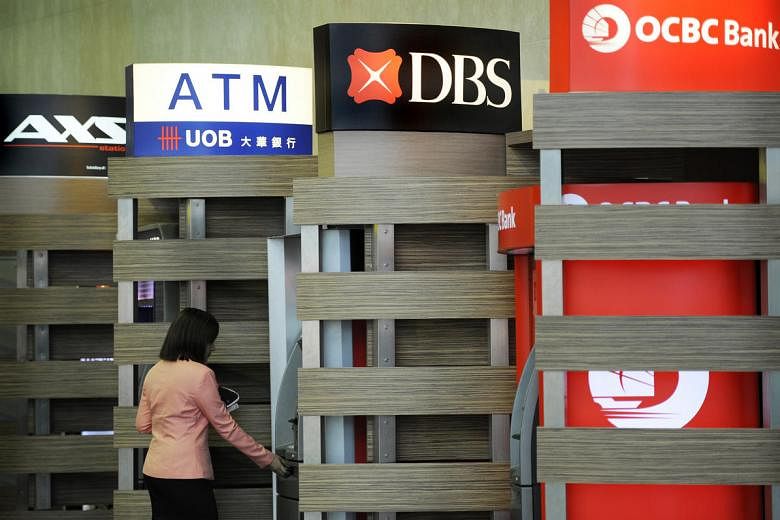SINGAPORE - Singapore banks second quarter results this month showed pressure on profitability and asset quality, but their credit profiles should remain resilient despite the weaker operating environment, said Fitch Ratings.
The banks have sufficiently strong loss-absorption buffers to withstand rising, cyclical global risks, and "enjoy steady funding and liquidity profiles and strong capitalisation," said Fitch in a report released on Wednesday (Aug 10).
The credit ratings agency said it expects a "modest" increase in the non-performing loan (NPL) ratios for DBS Group Holdings, United Overseas Bank and Oversea-Chinese Banking Corp.
Fitch added that "moderate" asset-quality stresses continued to emerge in the second quarter results and that these were more apparent at DBS which was more heavily exposed to Swiber Holdings, an oil and gas services provider that has filed for judicial management.
DBS classified S$651 million of Swiber exposures as non-performing in the second quarter, and set aside reserves of S$400 millon. The bank's total exposure to the troubled group stood at S$721 million at end-July and DBS will classify the outstanding S$70 million exposure as an NPL in the third quarter.
Fitch said it beieves DBS' loan-loss reserve policies are "generally sound".
UOB says it will classify its Swiber exposure as a NPL in the third quarter, but the bank's ultimate Swiber provisions might be low - given the high level of collateral held against these risks, said Fitch. OCBC has indicated that it has no exposure to Swiber.
Said Fitch" "We expect the banking sector's oil and gas loans to remain vulnerable amid weak sector fundamentals. However, we believe the rated Singapore banks are positioned well to meet rising credit risks from stresses in the sector because capital buffers are strong and underwriting procedures are disciplined."
The three Singapore banks have a combined oil and gas exposure of S$51 billion as at end-June 2016 - 47 per cent of ther combined equity. Total exposure to the more troubled support services sector, which has been badly hit by falling demand, amounted to S$17 billion or 15 per cent of the banks' combined equity, Fitch said, noting that these exposures "mostly tend to be secured".
Said the agency: "Our internal stress tests show that Singapore banks' sound capital buffers should enable them to weather a significant deterioration in credit quality. Funding and liquidity positions are also sound."


